Stone Of Scone: Mysterious Stone Of Destiny Has Turbulent Ancient History
A. Sutherland - AncientPages.com - Stone of Destiny is more popularly known as the Stone of Scone. It is an enigmatic block of sandstone, used for centuries in the coronation of the monarchs of Scotland and England.
What is the story behind this mysterious Stone? Why is it associated with royalty?
 Coronation Chair With Stone of Scone. Image licensed under Creative Commons by Cornell University Library
Coronation Chair With Stone of Scone. Image licensed under Creative Commons by Cornell University Library
The Stone of Destiny's history is complicated yet extremely interesting. The enigmatic artifact symbolizes one of the most significant and longest-running disputes the British Isles has witnessed over the last 700 years – between Scotland and England.
According to a Celtic legend, the Stone was a pillow used by the patriarch Jacob in biblical times. While Jacob was resting at Bethel in Israel, he beheld a vision of angels.
From the Holy Land, the Stone of Destiny traveled to Egypt, Sicily, and Spain. Finally, about 700 BC, it reached Ireland, where it was set up on the Hill of Tara, where the kings of Ireland were crowned.
The Stone was believed to have been brought to Scotland in the 9th century, and after being seized by plundering Celtic Scots who invaded and occupied Scotland, it ended up in the village of Scone in 840 AD.
A copy of the Stone of Scone. Image credit: Bubobubo2 - CC BY-SA 3.0
Until the 13th century, all of the kings of Scotland were seated on it during their coronation ceremonies, which took place at Moot Hill at Scone Palace. (Today, there is only a replica of the Stone there.)
John Balliol was the last Scottish king crowned on the Stone at Scone in 1292.
The Stone came to England amidst bloodshed and bitter rivalry between England and Scotland in the late 13th century. Edward, I removed the Stone in 1296 and took it to Westminster Abbey. He placed it under a special throne called the Coronation Chair so that all future kings of England could be crowned king of Scotland. But it did not happen for many years, until 1603, when James VI of Scotland was also crowned James I of England.
Despite its rather unremarkable appearance, this very ancient block of sandstone has had a turbulent history. It has been hidden, fought over, and stolen during the seven centuries. It was essential to the Children of Israel, and at the same time, the Stone was long associated with the British kings and queens
On December 25, 1950, a group of Scottish Nationalists removed the Stone and returned it to Scotland. (However, there have been rumors that only a copy of the artifact was returned.) On April 11, 1951, the Stone of Scone was found at the altar of Arbroath Abbey in Scotland.
In 1996, John Major's government finally returned the Stone to Scotland and placed it on public display in Edinburgh Castle, where it remains.
Could the Stone of Scone or Stone of Destiny be one of the most important religious relics in the world?
Written by – A. Sutherland AncientPages.com Staff Writer
Updated on May 1, 2024
Copyright © AncientPages.com All rights reserved. This material may not be published, broadcast, rewritten or redistributed in whole or part without the express written permission of AncientPages.com
Expand for referencesMore From Ancient Pages
-
 Bizarre Meat-Eating Dinosaur Found In Classic Fossil Site In Egypt’s Sahara Desert
Archaeology | Jun 9, 2022
Bizarre Meat-Eating Dinosaur Found In Classic Fossil Site In Egypt’s Sahara Desert
Archaeology | Jun 9, 2022 -
 Bes: Egypt’s Intriguing Dwarf God Of Music, Warfare And Protector Against Snakes, Misfortune And Evil Spirits
Egyptian Mythology | Jul 31, 2016
Bes: Egypt’s Intriguing Dwarf God Of Music, Warfare And Protector Against Snakes, Misfortune And Evil Spirits
Egyptian Mythology | Jul 31, 2016 -
 Wadjet – Egyptian Goddess Protected Pharaohs And Was Depicted As A Cobra-Uraeus
Egyptian Mythology | May 29, 2021
Wadjet – Egyptian Goddess Protected Pharaohs And Was Depicted As A Cobra-Uraeus
Egyptian Mythology | May 29, 2021 -
 Perplexing Accounts Of Ancient People Who Demonstrated Incredible Powers Of The Human Mind
Featured Stories | Feb 1, 2019
Perplexing Accounts Of Ancient People Who Demonstrated Incredible Powers Of The Human Mind
Featured Stories | Feb 1, 2019 -
 Native Americans Helped Shape The Klamath’s Forests For A Millennia Before European Colonization
Archaeology | Mar 21, 2022
Native Americans Helped Shape The Klamath’s Forests For A Millennia Before European Colonization
Archaeology | Mar 21, 2022 -
 Stikini ‘Man-Owl’ – Sinister Vampiric Monster That Works In Disguise
Featured Stories | Jan 29, 2019
Stikini ‘Man-Owl’ – Sinister Vampiric Monster That Works In Disguise
Featured Stories | Jan 29, 2019 -
 Unexplained Visions Of Airmen – Strange Presence And Disturbances – Part 1
Featured Stories | Feb 6, 2020
Unexplained Visions Of Airmen – Strange Presence And Disturbances – Part 1
Featured Stories | Feb 6, 2020 -
 Pandavleni Buddhist Caves: Sculptures, Inscriptions And Sophisticated Water Management System
Civilizations | Dec 8, 2016
Pandavleni Buddhist Caves: Sculptures, Inscriptions And Sophisticated Water Management System
Civilizations | Dec 8, 2016 -
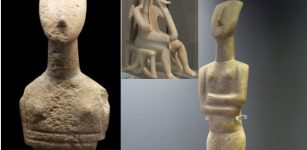 The Cyclades And Their Advanced And Mysterious Society Lost In Time
Featured Stories | Apr 25, 2022
The Cyclades And Their Advanced And Mysterious Society Lost In Time
Featured Stories | Apr 25, 2022 -
 Mystery Of An ‘Impossible’ Event In Georgia Linked To An Unusual Woman
Featured Stories | May 15, 2024
Mystery Of An ‘Impossible’ Event In Georgia Linked To An Unusual Woman
Featured Stories | May 15, 2024 -
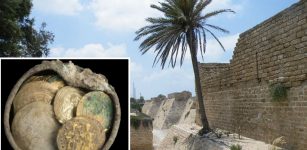 Rare Gold Coins And Treasures Linked To Crusaders’ Conquest Of Caesarea – Discovered
Archaeology | Dec 4, 2018
Rare Gold Coins And Treasures Linked To Crusaders’ Conquest Of Caesarea – Discovered
Archaeology | Dec 4, 2018 -
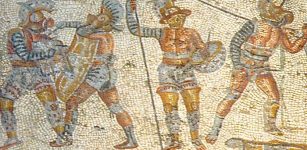 Were There Gladiators In Roman Britain? An Expert Reviews The Evidence
Featured Stories | Mar 14, 2023
Were There Gladiators In Roman Britain? An Expert Reviews The Evidence
Featured Stories | Mar 14, 2023 -
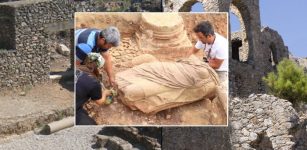 Roman-Era Female Statue Dated Back To 1,800 Years Ago Unearthed In Anemurium, Türkiye
Archaeology | Nov 14, 2023
Roman-Era Female Statue Dated Back To 1,800 Years Ago Unearthed In Anemurium, Türkiye
Archaeology | Nov 14, 2023 -
 Kunlun Mountain – Mythical Dwelling Place Of Gods, Sacred Animals And Symbol Of Axis Mundi In Chinese Mythology
Chinese Mythology | Jan 31, 2019
Kunlun Mountain – Mythical Dwelling Place Of Gods, Sacred Animals And Symbol Of Axis Mundi In Chinese Mythology
Chinese Mythology | Jan 31, 2019 -
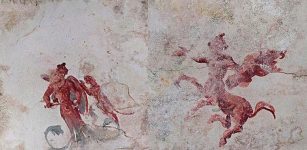 Sphinx Room Discovered At Emperor Nero’s Famed Domus Aurea (Golden House)
Archaeology | May 9, 2019
Sphinx Room Discovered At Emperor Nero’s Famed Domus Aurea (Golden House)
Archaeology | May 9, 2019 -
 Unusual Burial Ceremony: Bones Of The Dead Were Sorted And Categorized Before Burial
Archaeology | Jan 24, 2016
Unusual Burial Ceremony: Bones Of The Dead Were Sorted And Categorized Before Burial
Archaeology | Jan 24, 2016 -
 Lost Mayan City Hidden Deep In The Peten Jungle Discovered By Expedition Team
Archaeology | Mar 21, 2022
Lost Mayan City Hidden Deep In The Peten Jungle Discovered By Expedition Team
Archaeology | Mar 21, 2022 -
 Humans’ Oldest Jawed Ancestor Is A 439-Million-Year-Old Spiky Shark – Surprising Discovery Shows
Archaeology | Sep 29, 2022
Humans’ Oldest Jawed Ancestor Is A 439-Million-Year-Old Spiky Shark – Surprising Discovery Shows
Archaeology | Sep 29, 2022 -
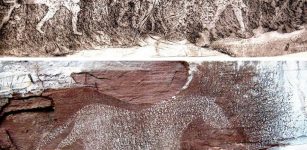 Sunduki – ‘Home Of The Gods’ – One Of The World’s Oldest Astronomical Observatories
Civilizations | Oct 4, 2015
Sunduki – ‘Home Of The Gods’ – One Of The World’s Oldest Astronomical Observatories
Civilizations | Oct 4, 2015 -
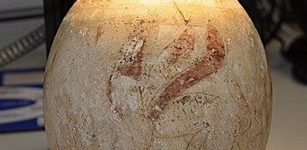 5,000-Year-Old Mystery: Decoration Of Eggs Predates Our Easter Tradition
Archaeology | Apr 9, 2020
5,000-Year-Old Mystery: Decoration Of Eggs Predates Our Easter Tradition
Archaeology | Apr 9, 2020

